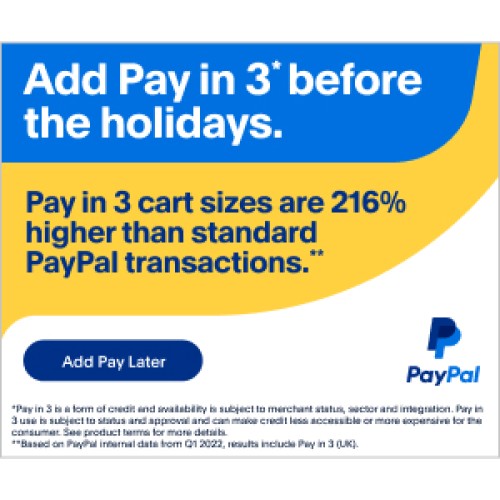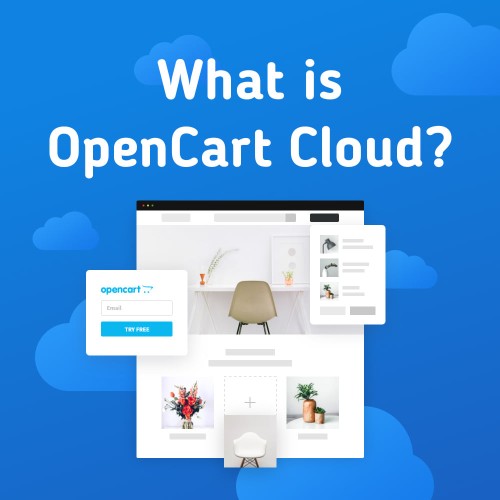Did you know that you can spread knowledge and earn money by selling courses online? Well, now you know you can! Selling courses on Opencart Cloud store can open a world of possibilities for you and your business.
The truth is that launching online courses isn't just about sharing knowledge. It's a strategic move that can bring you satisfying revenue. Plus, if you already own an eCommerce platform, it can help you revolutionize it.
Online courses introduce diversified revenue streams, enhance brand authority, extend market reach beyond borders, create upselling opportunities, and provide valuable data-driven insights into customer behavior.
Recent statistics show that the global e-learning market size is projected to reach $167 billion in 2023. As the world embraces flexible, self-paced learning, your Opencart Cloud store can tap into this trend, aligning education with entrepreneurship for a thriving digital future.
In this complete guide, you’ll learn how to navigate through this exciting journey. From crafting the perfect course to setting up your Opencart Cloud store and implementing digital marketing strategies, we've got you covered.
4 Tips to Sell Online Courses on Your Opencart Cloud Store
Selling online courses requires strategic finesse. Without a well-thought-out plan, you risk doing it all wrong, wasting precious time and money on courses no one buys. So, let's explore each tip in detail, ensuring you're well-equipped to embark on your journey as an online course entrepreneur.
1. Choose the Right Course Topic
Your course's success begins with a captivating topic. The right topic shouldn’t just be what you're passionate about (although this is extremely important too!). It should also be what your audience needs and wants.
But how do you know what's truly in demand? Here are some tips to help you determine your audience's needs:
Research forum discussions: Dive into online forums, Reddit threads, and LinkedIn groups related to your niche. Pay attention to the questions and discussions that gain traction. What challenges are people seeking solutions for?
Keyword research: Use tools like Google Keyword Planner and SEMrush to identify popular search terms in your industry. High search volume indicates strong interest.
Social media insights: Monitor hashtags and trends on social media platforms like Twitter / X, Instagram, and TikTok. What topics are gaining attention and sparking conversations? You can use tools like Hashtagify to get ideas of what’s currently popular.
Competitor analysis: Explore the courses your competitors are offering. Identify gaps or areas they might be overlooking. Can you offer a unique perspective or fill a void?
Survey your audience: If you have a current customer base or social media following, conduct surveys to understand their pain points and what they'd like to learn.
Industry reports: Stay updated with industry reports and market research. These often highlight emerging trends and consumer buying habits.
By combining insights from these sources, you'll gain a comprehensive understanding of today’s consumer demands. The key is to strike a balance between your expertise and what your audience is eager to learn. This synergy will lay the foundation for a course that not only educates but also resonates with your learners.
2. Set up an Opencart Cloud Store
Now you know what your course will cover, it's time to build your online learning hub. Opencart lets you build a digital storefront that's accessible to the world.
You can customize your store's appearance to match your liking or your existing brand’s unique style. Organize your courses logically, offering previews to entice learners.
Creating an Opencart Cloud store to host your online courses is super easy. Your store will be hosted on AWS servers at no extra cost.
There are more blog posts about Opencart Cloud setup you can check out on this website. For instance, you can explore ideas of what Opencart can do for you as an online business owner and other dedicated resources that cover Opencart Cloud setup in detail.
While Opencart Cloud is your digital storefront, you’ll still need a platform like Thinkific to host and deliver your online courses. When used in conjunction, you’ll get a holistic solution for your course-selling journey, from compelling content creation to storefront management.
3. Price Your Online Course
Pricing can be a maze. How do you strike the balance between profit and affordability? You need to know your product’s perceived value and how much your target audience is willing to pay for.
Analyze similar courses in the market to gauge competitive pricing. Consider your course's uniqueness, depth, and the expertise you bring to the table. Whatever you decide, as a general rule, selling your course for less than $50 is not recommended. You don’t want people to think your course doesn’t offer that much value.
Tiered pricing is an effective strategy. You can offer a base product at an affordable rate while providing premium packages with added value. Implementing an initial launch discount can also generate excitement and encourage early sign-ups.
For instance, this online course seller (it’s not an Opencart Cloud store, but I just want to illustrate my point about pricing) provides different packages to suit various people’s preferences and budgets.
Here are other tips to consider when pricing your online course:
Don’t price your course based on its length. Price it according to the value it gives.
Quantify the results. You want to specify what exactly your students can expect from taking the course so you can position it as something they should take. Specify how much time can they save learning about marketing with your course, for example.
There isn’t really a hard-and-fast rule for how much exactly you should price your course. What you can do is experiment with multiple price points. Start with a price, see how people react, then change it later. Wash, rinse, and repeat until you find that sweet spot that makes sense for both learners and you as a business owner.
4. Promote Your Course Based on Buyer’s Journey
A buyer's journey refers to the stages a prospective student goes through, from discovering your digital products to making a purchasing decision. You need to visualize this process so you’ll know how to nurture interest and build trust until your audience becomes paying customers. When you understand how people search for online courses, you can use content at the right touchpoints to convert them into loyal students.
The journey of a typical online course buyer typically starts with browsing. That’s why offering free content like eBooks, webinars, or mini-courses can be a powerful strategy. These resources not only showcase your expertise but also build trust by providing tangible value upfront.
Leverage the power of generative AI to save time and grab attention. Generative AI can analyze your brand's voice and style, then produce text that matches your existing content seamlessly. It's like having a virtual assistant that understands your vision and helps bring it to life.
Apart from written content, you can offer interactive videos that provide a sneak peek into your teaching style and course content. These videos can help you connect with viewers on a personal level and generate excitement. Consider hosting webinars or even free lessons that offer a taste of your course, like the online course seller above.
As learners engage with your free content, they'll develop confidence in your teaching methods and the insights you share.
To ensure you cover all potential customer’s touchpoints, make use of different marketing platforms available to you. Leverage email marketing, influencer collaborations, and social media to amplify your course's visibility.
You should also ensure a seamless enrollment process. When learners decide to take the plunge and enroll in your course, ensure the customer experience and enrollment process are seamless. An intuitive, user-friendly checkout process minimizes friction and encourages swift conversion. Clearly communicate the benefits of enrolling and any exclusive features they'll gain access to.
Each touchpoint is an opportunity to nurture interest, build trust, and ultimately, convert visitors into enthusiastic course-takers. So, you should always have a deep understanding of the needs of your larger audience.
Conclusion
E-learning holds remarkable opportunities. As we wrap up this guide, you're armed with everything you need to venture into the realm of selling courses on Opencart Cloud Store.
To begin, choose your course topic wisely and harness the potential of Opencart Cloud's centralized platform. Successful course selling requires establishing an effective pricing and digital marketing strategy. Nurturing your learners through an engaging buyer's journey will help you to become a trusted online course provider.
Embrace the world of digital education, start selling courses on Opencart Cloud Store, and monetize your technical expertise today!



Login and write down your comment.
Login my OpenCart Account